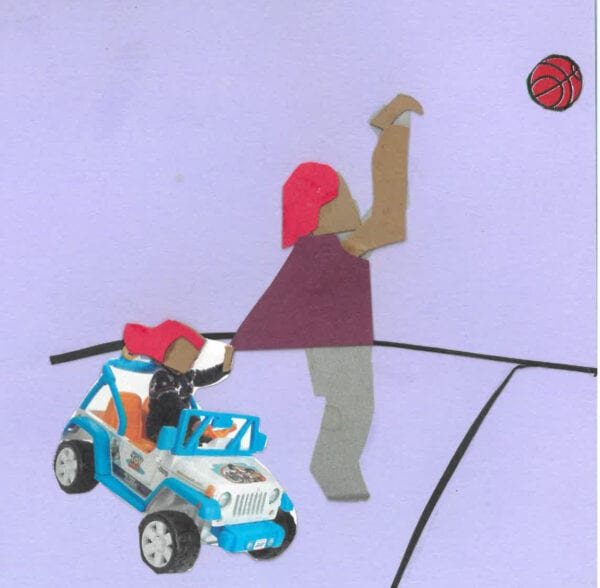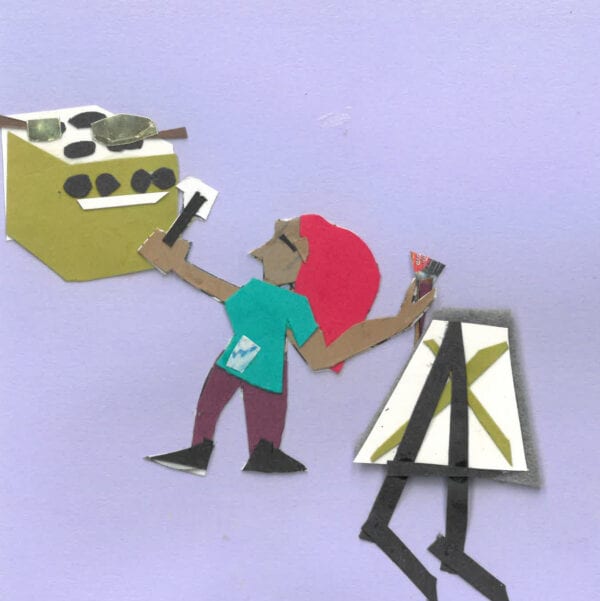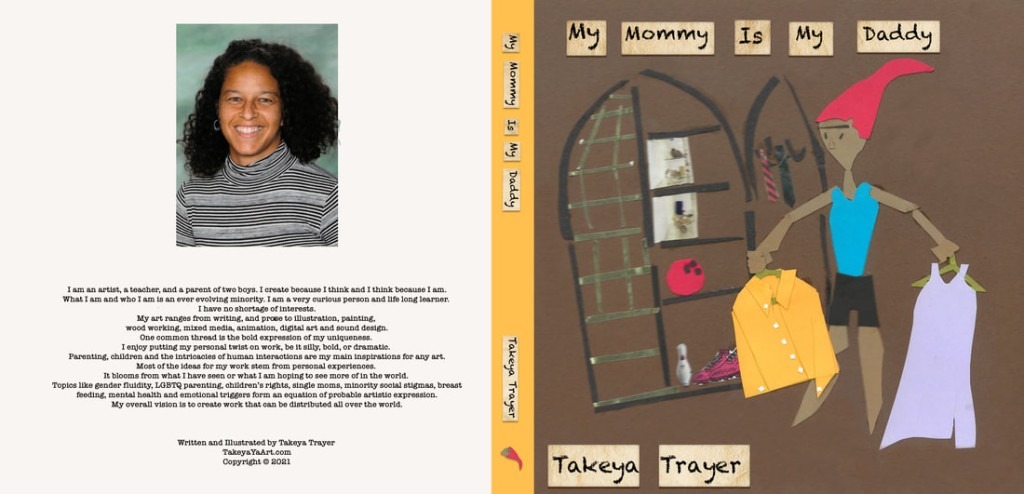Takeya Trayer used a Professional Artist Grant
to bring her family’s story to life in an LGBTQIA+-friendly children’s book
. . .
As an arts writer, one of the first questions I ask an artist is what inspires them.
This is especially true if we’re talking about a particularly unusual piece of art, like a banana duct-taped to a wall. I haven’t had the opportunity to interview Maurizio Cattelan, but if I do, my first question will be, “So, what inspired you to tape a banana to this wall?” Of the 5 W’s, ‘why’ is often the most interesting.
But what if the piece of art in question is a children’s book with a nonbinary character?
Now that’s a loaded question.

If the folks crying indoctrination ever had the opportunity to ask an author the ‘why’ question, they might hear a different story from what they’ve constructed.
On one level, I understand the fear. Children are impressionable, and religious groups have used colorfully illustrated children’s books to indoctrinate children for many years. And though “indoctrination” is considered a bad word of late, there’s nothing wrong with a Catholic parent giving their child a prayer book on their communion.
But not every book featuring a Catholic character is meant to preach Catholicism. A memoir from an author who grew up Catholic doesn’t have the same purpose as a prayer book. Sometimes an author writes a book to share their life experience with the world. Sometimes, the word isn’t “indoctrination.” It’s “representation.”
“When I finally had children, I wanted something that my child was going to see themselves in and see their family makeup in,” indie children’s book author and arts educator Takeya Trayer says.
Trayer read a little bit of everything as a kid. And as a child, she didn’t notice that children’s books lacked certain types of families. But as a teacher, Trayer realized that there weren’t a lot of books that featured two mommies.
So Trayer created a book about her own family.

Trayer wrote My Mommy Is My Daddy in 2010. The story came first. Then it was just a matter of choosing a suitable medium. She learned them all in college – drawing, painting, sculpture, clay, photography — but animation is her favorite.
“Pixar really inspired me,” says Trayer, “You grow up watching cartoons like Bugs Bunny, Looney Tunes. I grew up watching, drawing, dabbling with writing. But not until I saw Pixar was I like, ‘I want to do that.’”
But, as Trayer points out, animation can be tedious and time-consuming. So she often tries to get her ideas out in other ways first. My Mommy is My Daddy began as a collection of left-handed black and white drawings.
“It’s been a long time that I’ve been trying to get it out in color, and I couldn’t find the medium…” Trayer explains. “When I illustrated it, I was just coloring it in. But it’s not as whimsical when it’s colored in as it is when it’s drawn. I was looking for a nice little medium or style that looked as whimsical as the left-hand drawing.”

Trayer was tearing paper with her class for collages one day when she realized, “Maybe it will look really cool if I use cut paper.”
“I played around with it a little bit, and I really enjoyed the style,” Trayer says.

Around this time, Trayer noticed that the Creative Pinellas Professional Artist Grants were open.
Trayer recalls thinking, “This grant could really help me publish my book and get the software that I need to publish it.”
Trayer applied, receiving the grant in 2021. The Professional Artist Grant gave Trayer the funds she needed to purchase a camera, iPad and editing software. With this new hardware and software, Trayer took quality photographs of her collages, then edited and assembled them into a book.
Trayer published My Mommy is My Daddy in color that same year — a year before the Florida Senate passed the infamous “Don’t Say Gay” bill.

Coincidentally, Trayer’s book doesn’t have the word “gay” in it. And it’s a children’s book, so there’s no sexual content. If the book has a message, it’s that sometimes a woman performs traditionally masculine roles in a family, and that’s OK. It’s also OK if you don’t understand.
After talking to Trayer and reading the book, it’s easy to see how My Mommy is My Daddy is Trayer’s way of introducing her nontraditional family to the world. In it, we see a parent parenting — taking their kid to the pool or the park, working to support their family, helping their child with math homework. Trayer gives Mom the traditional “she” pronouns – she doesn’t use the word “gay” and there’s no kissing. In short, there’s nothing scandalous here.
At work, Trayer encourages kids to tell their own stories. Teaching animation camps for kids helps her stay updated on the latest animation styles and software like stop motion animation and Adobe Character Animator.
Outside of work, she tells her own. The adventures of Trayer’s nonbinary Taki character are far from over. Trayer has a bank of short stories just waiting for the illustrations and animation to bring them to life for LGBTQIA+ families. Presently, she’s working on a “Night Before Christmas”-inspired tale about making the night magical regardless of what you believe in.
Although Taki mainly lives in books now, Trayer hopes to take her main character into virtual or augmented reality, turning her books into stories kids can experience like a video game.
“Kind of like an animation,” Trayer explains, “but you are setting the pace that you’re going through the story. You can turn the page any time that you would like to.”
. . .



